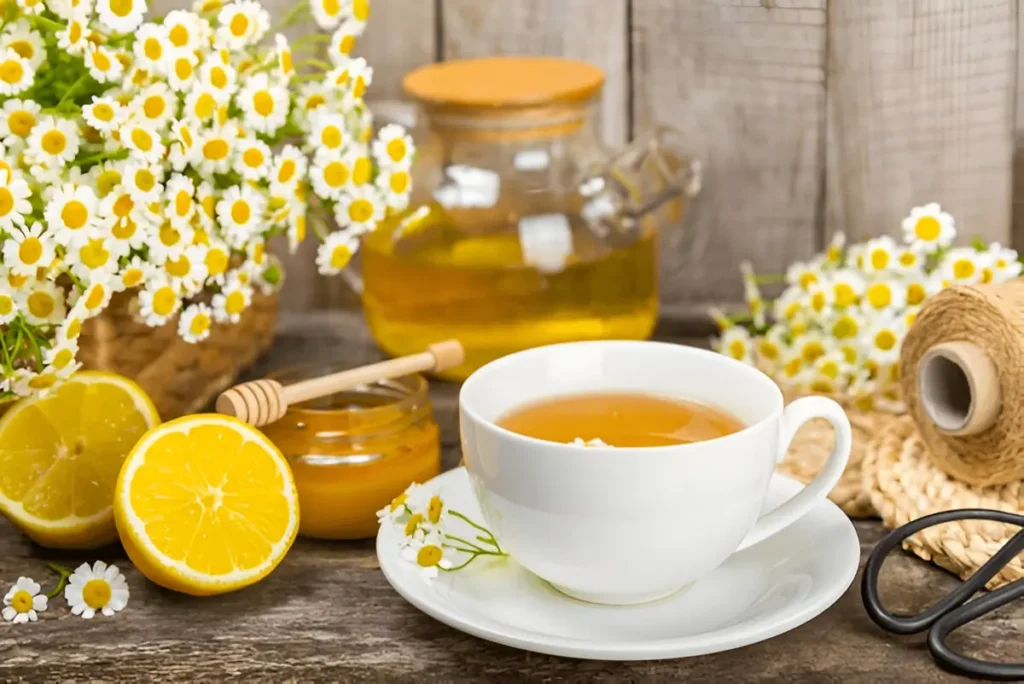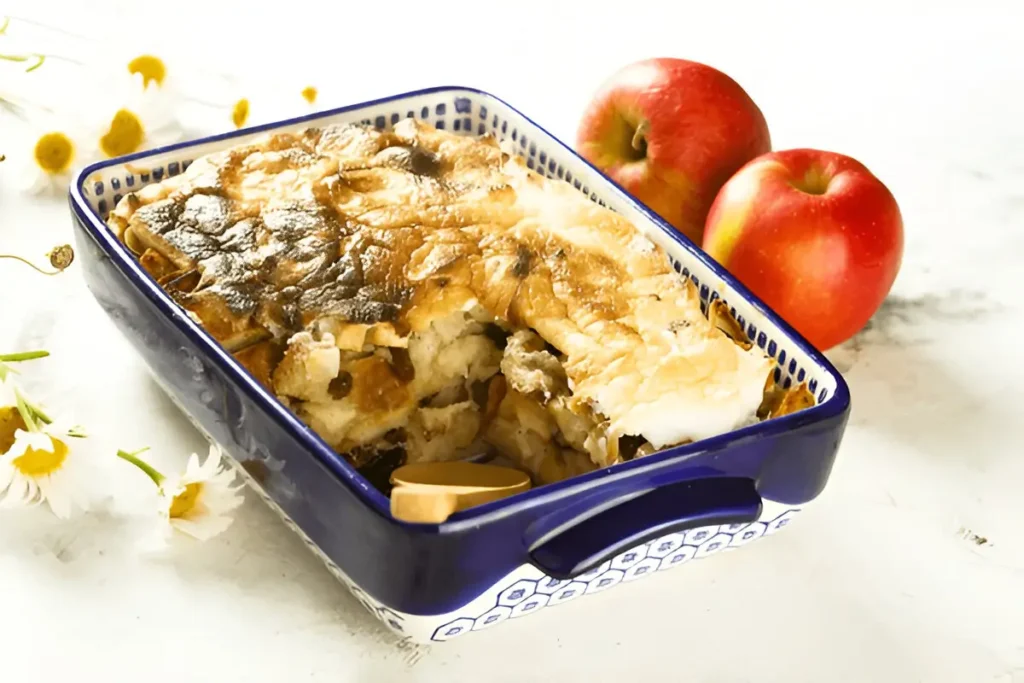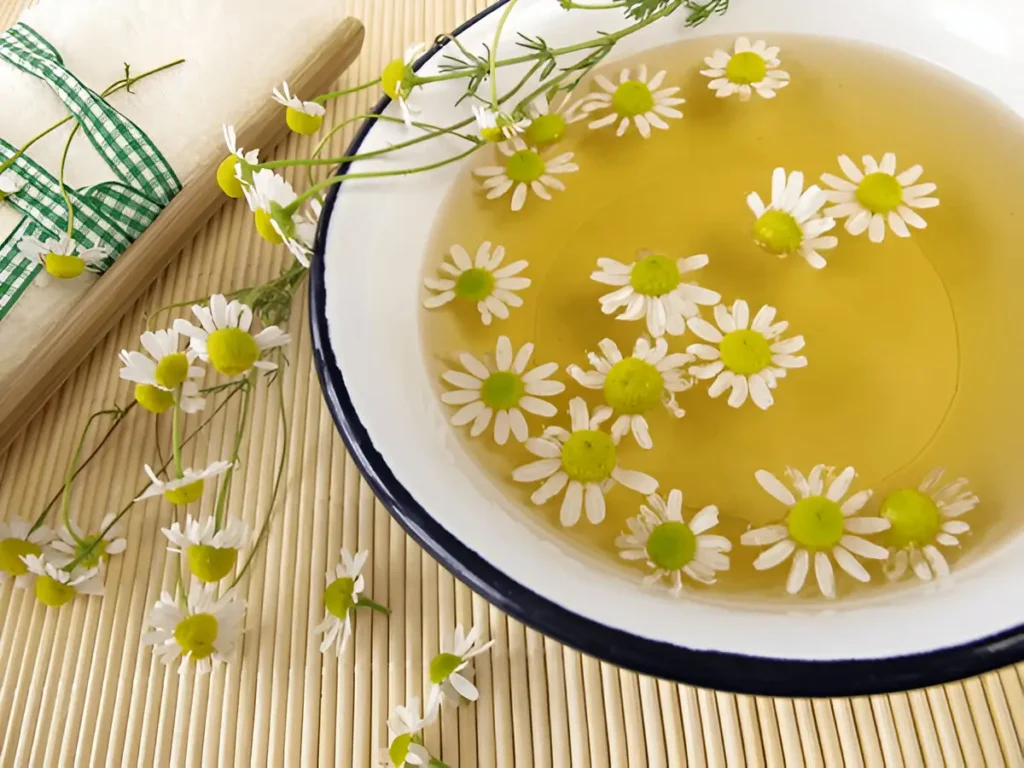Chamomile, a soothing and versatile medicinal herb, has been a cornerstone of herbal remedies for centuries. Known for its calming effects and numerous health benefits, chamomile is a popular choice for those seeking natural relief from stress and discomfort.
The uses of chamomile are diverse, ranging from promoting relaxation and improving sleep quality to soothing digestive issues. As a herbal remedy, it is valued for its gentle yet effective action, making it suitable for a wide range of individuals, including children and the elderly.
In this article, we will explore the various benefits of chamomile, its uses, and provide guidance on how to prepare the perfect cup of chamomile tea, unlocking its full potential as a natural herbal remedy.
Table of Contents
What Is Camomile? Understanding This Ancient Medicinal Herb
Camomile is more than just a soothing tea; it’s an herb with a rich botanical and cultural heritage. To understand camomile, one must first explore its classification and the nuances between its varieties.
Botanical Classification and the Daisy Family Connection
Camomile belongs to the Asteraceae family, commonly known as the daisy family. This classification is shared with other well-known herbs and flowers, highlighting the botanical diversity within this group. The camomile flowers, with their distinctive appearance, are used for medicinal purposes.
The connection to the daisy family is not merely botanical; it also reflects the herb’s traditional uses and its visual similarity to daisies. This family connection underscores the herb’s natural and historical significance.
German vs. Roman Camomile: Key Differences
There are two primary types of camomile used for medicinal purposes: German camomile (Matricaria chamomilla) and Roman camomile (Chamaemelum nobile). While both are used for their calming effects, they have distinct differences in terms of their appearance, aroma, and applications.
German camomile is often preferred for its anti-inflammatory properties, whereas Roman camomile is valued for its gentle action on the stomach and skin. Understanding these differences is crucial for selecting the appropriate type of camomile for specific health needs.
The Rich History of Camomiles Throughout Civilization
Camomile’s history is as rich as it is ancient, with roots tracing back to civilizations that revered it for its healing attributes. This herb has been a cornerstone in the realm of medicinal herbs, cherished for its soothing properties and versatility in various applications.
Ancient Egyptian, Greek, and Roman Uses
The use of camomile dates back to ancient Egypt, where it was valued for its therapeutic benefits. The Greeks and Romans also utilized camomile in their herbal remedies, often brewing it into teas to promote relaxation and alleviate digestive issues. As the Greek physician Hippocrates noted, “Let food be thy medicine and medicine be thy food,” highlighting the integral role of herbs like camomile in ancient health practices.
Traditional Folk Medicine Applications Across Cultures
Camomile has been a staple in herbal remedies across various cultures, used to treat a myriad of ailments. From soothing skin irritations to calming digestive issues, camomile’s applications in traditional folk medicine are vast. Its enduring presence in health practices is a testament to its efficacy and the trust it has garnered over centuries.
Health Benefits of Camomile Backed by Science

With a rich history in traditional medicine, camomile’s health benefits have been substantiated by modern science. The herb has been used for centuries, and recent studies have validated its efficacy in various health areas.
Anti-Inflammatory and Antioxidant Properties
Camomile is rich in antioxidants and has demonstrated anti-inflammatory properties, which can help protect against cell damage and reduce inflammation. These properties are crucial in preventing chronic diseases such as heart disease and cancer.
- Antioxidants help in neutralizing free radicals, thereby reducing oxidative stress.
- Anti-inflammatory compounds may help in managing conditions like arthritis.
Digestive Health Improvements
Camomile has been traditionally used to soothe digestive issues. Studies suggest that it can help in reducing inflammation in the digestive tract and alleviating symptoms of indigestion and anxiety-related stomach discomfort.
- Camomile tea can be a calming beverage before meals to aid digestion.
- Its anti-inflammatory properties may help in managing irritable bowel syndrome (IBS) symptoms.
Sleep Quality and Natural Anxiety Relief
One of the most recognized benefits of camomile is its ability to promote relaxation and improve sleep quality. It is often consumed as a soothing tea to help individuals unwind before bedtime.
How Camomile Affects the Nervous System
Camomile contains apigenin, an antioxidant that binds to certain receptors in the brain, potentially decreasing anxiety and initiating sleep. This interaction with the nervous system is key to its calming effects.
Recommended Dosage for Calming Effects
For anxiety relief and improved sleep, a typical dosage is 1-2 cups of camomile tea before bedtime. The tea can be made by steeping high-quality camomile flowers in hot water for 5-10 minutes.
Camomiles as Natural Remedies for Common Ailments
The soothing properties of camomile make it an effective natural remedy for several everyday health concerns. Its versatility in health care is evident in its various applications, ranging from topical treatments to internal health benefits.
Skin Conditions and Topical Applications
Camomile is widely recognized for its anti-inflammatory and antioxidant properties, making it an excellent ingredient for soothing skin irritations and promoting wound healing. Topical applications of camomile can be found in creams, ointments, and lotions designed to calm eczema and other skin conditions.
Respiratory Issues and Immune Support
Camomile tea is often consumed to ease respiratory issues, such as colds and coughs, due to its anti-inflammatory properties. Additionally, it is believed to support the immune system, helping to prevent illnesses and promote overall health.
Women’s Health Benefits
Camomile has been traditionally used to alleviate symptoms associated with menstrual cramps and PMS. Its calming effects can help reduce stress and promote a sense of well-being, making it a valuable herbal remedy for women’s health issues.
Incorporating camomile into one’s health regimen can provide a natural and effective way to manage common ailments. Whether used topically or consumed as a tea, camomile’s benefits make it a valuable addition to a holistic approach to health.
Step-by-Step Guide to Making the Perfect Cup of Camomile Tea
Camomile tea, renowned for its calming effects, can be elevated to a delightful experience with the right brewing technique. The art of making the perfect cup involves a few simple yet crucial steps that enhance its natural soothing qualities.
Selecting Quality Camomile Flowers
The foundation of a great cup of camomile tea lies in the quality of its flowers. Opt for high-quality, dried camomile flowers that are free from additives and preservatives. Look for products that are certified organic and have been stored properly to retain their potency and flavor.
Water Temperature and Steeping Time
Achieving the perfect cup also depends on the water temperature and steeping time. These factors play a crucial role in extracting the optimal amount of flavor and nutrients from the camomile flowers.
The Ideal Water Temperature Range
For camomile tea, the ideal water temperature is between 200°F and 212°F (93°C to 100°C). Using water within this range helps to extract the delicate flavors and oils from the flowers without causing bitterness.
Timing Your Steep for Optimal Flavor
The steeping time for camomile tea typically ranges from 5 to 7 minutes. A longer steeping time can result in a stronger, more relaxing tea, while a shorter time yields a milder flavor. Experiment to find your preferred balance.
Enhancing Flavors with Complementary Ingredients
While camomile tea is delightful on its own, you can also enhance its flavor with complementary ingredients. Consider adding a slice of lemon, a drizzle of honey, or a sprinkle of dried lavender to create a unique and soothing tea experience. These additions can not only improve the taste but also add to the tea’s relaxing and health-promoting properties.
Advanced Brewing Techniques for Camomile Tea Enthusiasts
For those looking to elevate their camomile tea experience, advanced brewing techniques offer a new dimension of flavor and relaxation. By exploring alternative methods, enthusiasts can unlock the full potential of this soothing tea.
Cold Brew Camomile Method
The cold brew method is a simple yet effective way to prepare camomile tea, especially during warmer months. This technique involves steeping camomile flowers in cold water for an extended period, resulting in a smooth, low-acidity brew.
Overnight Refrigeration Process
To cold brew camomile tea, combine 1-2 tablespoons of dried camomile flowers with 2 cups of cold water in a glass jar. Store it in the refrigerator overnight (8-12 hours) to allow the flavors to infuse slowly.
Serving Suggestions for Cold Brew
Once the brewing process is complete, strain the tea into a separate container and discard the solids. Serve the cold brew chilled, optionally sweetened with honey or flavored with a slice of lemon, making it a refreshing beverage for any time of day.
Creating Concentrated Camomile Infusions
For those who prefer a stronger brew, creating a concentrated camomile infusion is a viable option. This method involves using a higher ratio of camomile flowers to water and steeping for a shorter duration, resulting in a potent tea that can be diluted according to taste.
To make a concentrated infusion, use 4-6 tablespoons of dried camomile flowers per cup of boiling water. Steep for 5-7 minutes, then strain and dilute with hot or cold water as desired. This concentrated brew can be used as a base for various herbal remedies, offering versatility in its application.
Beyond Tea: Other Culinary Uses for Camomile
While camomile tea is a well-known remedy, its uses extend far beyond the realm of beverages. This versatile herb can be incorporated into a variety of dishes, from baked goods and desserts to savory meals, offering a unique flavor and potential health benefits.
Camomile in Baking and Desserts


Camomile can be a delightful addition to baked goods and desserts, providing a subtle floral flavor that complements sweet ingredients. It pairs well with lemon, honey, and berries, making it a great addition to cakes, cookies, and muffins. For instance, a camomile and lemon cake can be a refreshing dessert, while camomile-infused honey can add a soothing flavor to ice cream or yogurt.
Some creative ways to use camomile in baking include making camomile shortbread cookies, camomile panna cotta, or even camomile and fruit crisps. When using camomile in desserts, start with a small amount to ensure the flavor isn’t overpowering, as it can be quite subtle.
| Dessert | Camomile Pairing | Flavor Profile |
|---|---|---|
| Cake | Lemon | Bright, citrusy |
| Ice Cream | Honey | Sweet, soothing |
| Cookies | Berries | Fruity, floral |
Savory Dishes and Innovative Culinary Applications
Camomile is not limited to sweet dishes; it can also be used in savory recipes to add depth and complexity. It pairs well with ingredients like chicken, fish, and vegetables, particularly those with a slightly bitter taste, as camomile’s floral notes can balance out bitterness.
Innovative chefs have used camomile in a variety of savory dishes, such as camomile-infused soups, stews, and braising liquids. It can also be used to make a flavorful salad dressing when combined with olive oil, lemon juice, and garlic. The key is to use camomile judiciously, as its flavor can be subtle and easily overpowered by other ingredients.
DIY Camomile Beauty and Wellness Products

Harness the power of camomile to create effective and natural beauty products at home. Camomile’s calming properties make it an ideal ingredient for soothing skin irritations and promoting relaxation.
Facial Steams and Toners
Camomile can be used to create a rejuvenating facial steam that opens up pores and cleanses the skin. Its anti-inflammatory properties help in reducing redness and irritation.
Step-by-Step Facial Steam Procedure
To create a camomile facial steam, boil water and add a handful of dried camomile flowers. Let it steep for 5-7 minutes, then lean over the bowl with a towel covering your head. Stay for 5-10 minutes, breathing deeply.
Creating a Homemade Camomile Toner
Mix cooled camomile tea with witch hazel to create a toner that balances your skin’s pH and tightens pores. This toner is particularly beneficial for sensitive skin.
Bath Soaks and Relaxation Rituals
A camomile-infused bath soak can be a wonderful way to unwind after a long day. The herbal remedies like camomile help in natural anxiety relief and promote a good night’s sleep.
To create a camomile bath soak, add 1 cup of dried camomile flowers to your bathwater and soak for at least 20 minutes. You can also combine camomile with other relaxing herbs like lavender for enhanced benefits.
Hair Care Treatments
Camomile is not just beneficial for the skin; it also has numerous benefits for hair care. It can help in brightening blonde hair, soothing scalp irritations, and adding shine to your locks.
To create a camomile hair treatment, rinse your hair with cooled camomile tea after shampooing. You can also leave a camomile infusion on your scalp for 30 minutes before rinsing for a soothing treatment.
Growing Your Own Camomile: A Gardener’s Guide
Cultivating camomile in your garden not only provides you with a steady supply of this medicinal herb but also adds a touch of serenity to your outdoor space. Camomile, known for its soothing effects, is relatively easy to grow and maintain.
Optimal Growing Conditions and Care
Camomile thrives in well-drained soil and full sun. It’s a hardy herb that can grow in a variety of conditions but does best in areas with moderate temperatures. Regular watering is essential, but ensure the soil doesn’t become waterlogged. Camomile is not particularly demanding in terms of care, making it a great choice for novice gardeners.
Harvesting and Drying Methods for Maximum Potency
The potency of camomile flowers is maximized when they are harvested and dried correctly. Proper techniques ensure that the medicinal properties are preserved for use in teas, skincare, and other applications.
When and How to Harvest Camomile Flowers
The best time to harvest camomile flowers is on a dry day, just after the dew has evaporated but before the sun is at its peak. Gently snip off the flower heads to avoid damaging the stems or leaves, allowing for future blooms.
Proper Drying and Storage Techniques
To dry camomile flowers, tie them in small bunches and hang upside down in a warm, dry, dark place. Once dried, store them in airtight containers to preserve their medicinal properties. Label the containers with the date to ensure you use the oldest stock first.
By following these guidelines, you can enjoy a bountiful harvest of camomile, enhancing your herbal remedies and adding a calming element to your garden.
Potential Side Effects and Precautions When Using Camomile
While camomile is generally considered safe, there are certain precautions to be aware of when using it as a herbal remedy. Camomile has been used for centuries for its calming effects and natural anxiety relief, but like any other herbal remedy, it may cause adverse reactions in some individuals.
Allergic Reactions and Cross-Sensitivities
Some people may be allergic to camomile, particularly those with allergies to plants in the daisy family, such as ragweed, chrysanthemums, or marigolds. Allergic reactions can range from mild symptoms like skin rashes or itching to more severe reactions, including anaphylaxis. It’s crucial to monitor your body’s response when first using camomile, especially if you have a history of allergies.
Cross-sensitivity between camomile and other plants in the Asteraceae family is also a consideration. If you’re allergic to one plant in this family, you may react to camomile as well. Consulting with a healthcare professional before using camomile is advisable, especially if you have known allergies.
Medication Interactions and Pregnancy Considerations
Camomile can interact with certain medications, including blood thinners, diabetes medications, and sedatives. The herb’s potential to cause drowsiness may be compounded when used alongside other sedatives or anti-anxiety medications. It’s essential to consult with your healthcare provider before using camomile, especially if you’re taking prescription medications.
Pregnant or breastfeeding women should also exercise caution when using camomile. While moderate consumption, such as in tea, is generally considered safe, high doses or prolonged use may stimulate the uterus or affect the fetus. As with any herbal remedy, it’s best to consult with a healthcare provider before using camomile during pregnancy or while breastfeeding.
Purchasing Guide: How to Select Quality Camomile Products
To reap the benefits of camomile, it’s vital to know how to navigate the market and select high-quality products. With various options available, understanding the differences between them is crucial for making informed decisions.
Evaluating Tea Bags vs. Loose Flowers
When choosing camomile for tea, consumers often face the decision between tea bags and loose flowers. Tea bags offer convenience and ease of use, making them a popular choice for those with busy lifestyles. On the other hand, loose flowers provide more flexibility in terms of brewing strength and are often preferred by tea enthusiasts for their superior flavor and aroma.
- Consider the quality of the tea bags: Are they made from high-quality, unbleached paper?
- Check the quantity and quality of camomile flowers within the tea bags or the packaging of loose flowers.
- Loose flowers allow for more control over the amount used, which can be beneficial for achieving the desired strength.
Understanding Labels and Certifications
When purchasing camomile products, understanding the labels and certifications can help ensure you’re getting a high-quality product. Look for certifications like USDA Organic or Fair Trade, which guarantee certain standards are met regarding the cultivation and sourcing of the camomile.
- Check for any relevant certifications that align with your values or needs.
- Read the ingredient list to ensure it contains 100% camomile or the desired concentration.
- Be aware of any additional ingredients that may be included for flavor or other purposes.
Conclusion: Embracing the Gentle Power of Camomile in Daily Life
As we’ve explored throughout this article, camomile is a versatile herb with a multitude of benefits and uses. From its calming properties to its applications in skincare and culinary delights, chamomile can be a valuable addition to daily life. Incorporating soothing tea into your routine can promote relaxation and improve overall well-being. Whether you’re seeking to unwind after a long day or simply looking for a natural remedy for common ailments, chamomile’s gentle power can be a powerful ally.
By embracing the various uses of camomile, you can experience the numerous benefits it has to offer. From promoting a restful night’s sleep to soothing digestive issues, chamomile’s calming properties can have a significant impact on both physical and mental health. As you explore the many applications of this ancient medicinal herb, you’ll discover that it’s a simple yet effective way to enhance your overall quality of life.
FAQ
What is the difference between German and Roman camomile?
German camomile and Roman camomile are two different species within the daisy family, with distinct characteristics and uses. German camomile is more commonly used for its medicinal properties, while Roman camomile is often used for its calming effects.
Can camomile tea help with anxiety and stress?
Yes, camomile tea is known for its natural anxiety relief and calming properties, making it a popular herbal remedy for stress and anxiety.
How do I select quality camomile flowers for tea?
To select quality camomile flowers, look for products that are labeled as organic, and check for certifications such as USDA Organic. Loose flowers are often preferred over tea bags for their flavor and potency.
Can I grow my own camomile at home?
Yes, camomile is relatively easy to grow at home, provided you have the right conditions. It prefers well-drained soil and full sun. Harvesting should be done when the flowers are in bloom.
Are there any potential side effects of consuming camomile tea?
While generally considered safe, camomile tea can cause allergic reactions in some individuals, particularly those with allergies to plants in the daisy family. It may also interact with certain medications.
Can camomile be used for skin conditions?
Yes, camomile has anti-inflammatory and antioxidant properties, making it beneficial for soothing skin conditions such as eczema and acne. It can be used topically in the form of creams, toners, or facial steams.
How should I store dried camomile flowers to preserve their potency?
Dried camomile flowers should be stored in airtight containers, away from direct sunlight and moisture, to preserve their medicinal properties.



